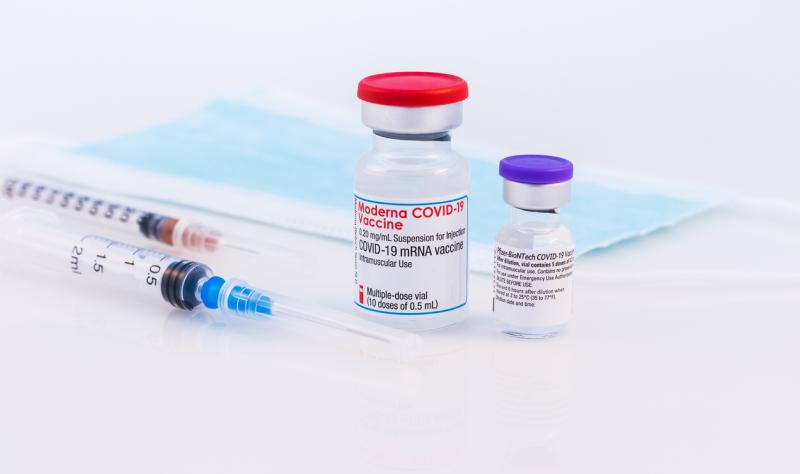Analysis: Last year’s COVID vaccines protected well against severe illness
Overall protection against infections peaked at 4 weeks after vaccination.


The updated 2024-25 COVID-19 vaccines provided 57% protection against hospitalization and death, although their effectiveness waned over time, according to a study yesterday in JAMA Internal Medicine.
The study assessed effectiveness against infection, emergency department (ED) visits, and hospitalization. Protection against infection and ED visits was 45%.
The study was based on outcomes seen among Nebraskan residents during the 2024-25 respiratory virus season and used hospital discharge data from member hospitals of the Nebraska Hospital Association and data from death certificates from the Nebraska Office of Vital Records.
Of 237,203 individuals included in the study, 86,594, 148,429, and 2,180 received the updated Moderna, Pfizer-BioNTech, and Novavax vaccines, respectively. In total, 12,860 SARS-CoV-2 infections, 3,330 COVID-19–related ED visits, 1,566 related hospitalizations, and 189 COVID-19–related deaths were reported.
Protection more durable against severe disease
Overall protection against infections peaked at 4 weeks after vaccination, dropping significantly by 20 weeks, but protection levels were similar for all Omicron subvariants circulating during the study period.
According to the authors, vaccine effectiveness against infection reached 44.7% (95% confidence interval [CI], 37.7% to 50.9%) 4 weeks postvaccination, declined to 35.5% (95% CI, 30.2% to 40.5%) at 10 weeks, and further dropped to 16.7% (95% CI, 8.4% to 24.2%) by 20 weeks.
Protection against ED visits, a sign of more serious illness, was much more durable; 45.1% at 4 weeks, 42.9% at 10 weeks, and 39.1% at 20 weeks. For hospitalization or death, effectiveness reached 57.3% at 4 weeks and dropped to 34.0% at 20 weeks.
Caution about low vaccine uptake
“Our study showed that the 2024-2025 COVID-19 vaccines were effective, especially against severe outcomes, although their effectiveness waned over time,” said Dan-Yu Lin, PhD, senior study author, in a press release from the University of North Carolina Gillings School of Global Public Health.
“Thus, it is beneficial to have an annual COVID-19 vaccination, particularly for individuals at high risk of severe outcomes. Our study also showed that vaccine effectiveness was similar against different Omicron subvariants. Thus, the 2025-2026 vaccines, which target similar omicron subvariants as the 2024-2025 vaccines did, will likely have similar effectiveness.”
We can expect a difficult fall and winter for the US when the combination of COVID-19, influenza, and respiratory syncytial virus encounter a population with low vaccination rates.
Former Food and Drug Administration Commissioner Robert Califf, MD, said in a commentary on the findings that, despite the strong protection against severe outcomes, not enough Americans, including healthcare professionals, are choosing to get vaccines against respiratory viruses this year.
“The SARS-CoV-2 virus is not going away,” Califf wrote. “We can expect a difficult fall and winter for the US when the combination of COVID-19, influenza, and respiratory syncytial virus encounter a population with low vaccination rates.
“Given the current level of mistrust for vaccines for all 3 of these diseases, we would be well served to continue to develop robust evidence and promote open discussion of that evidence, particularly among health professionals.”



